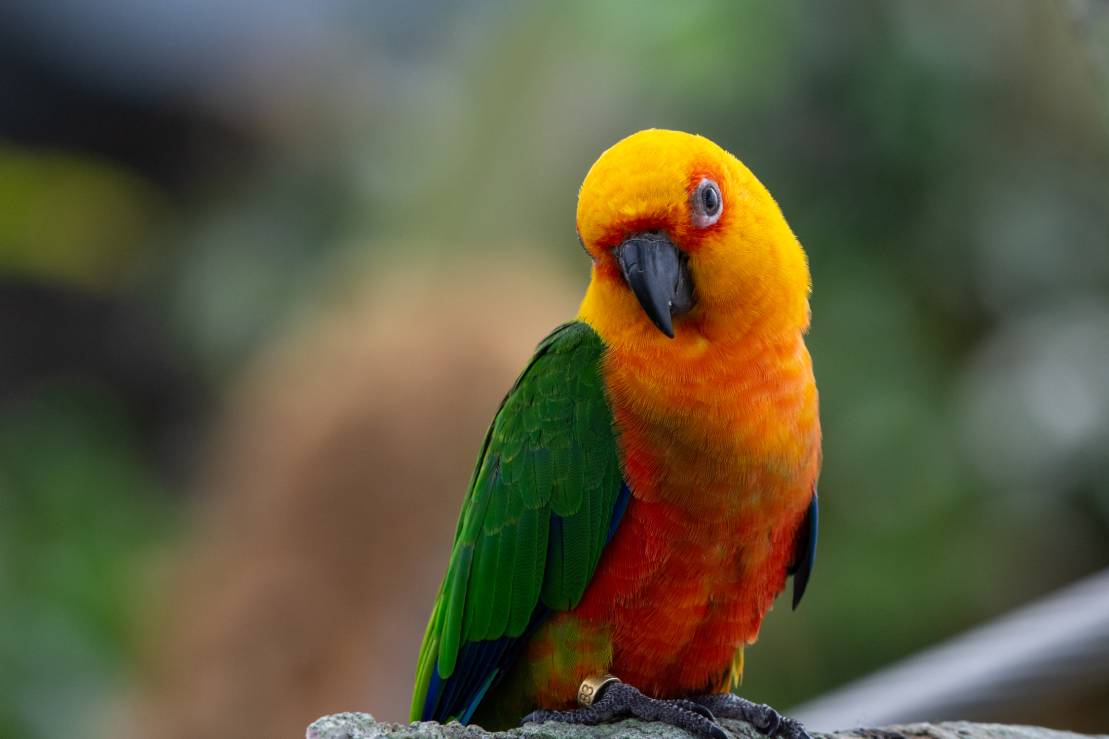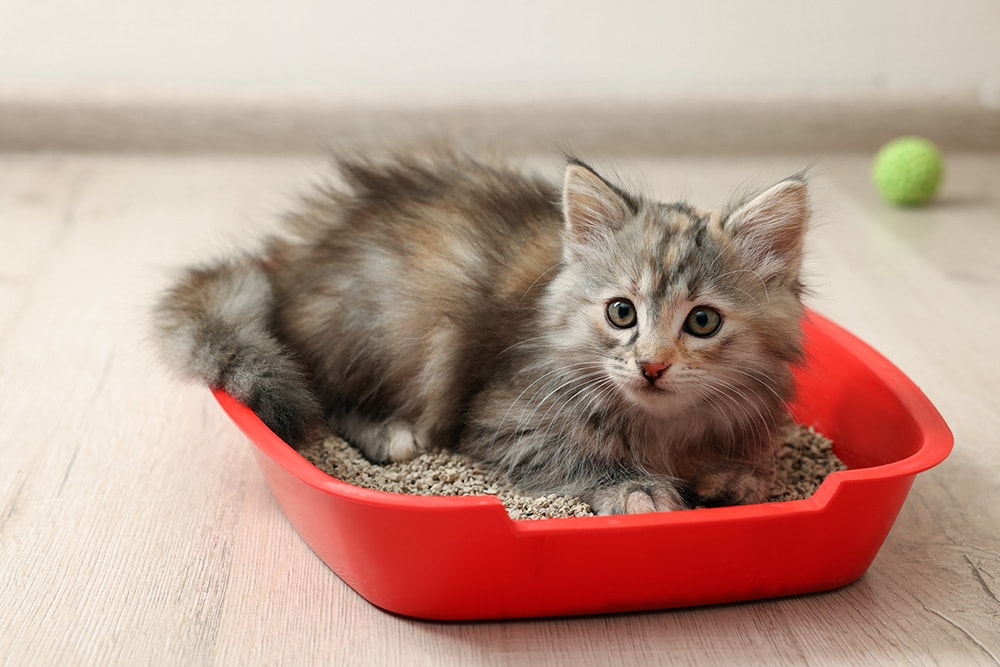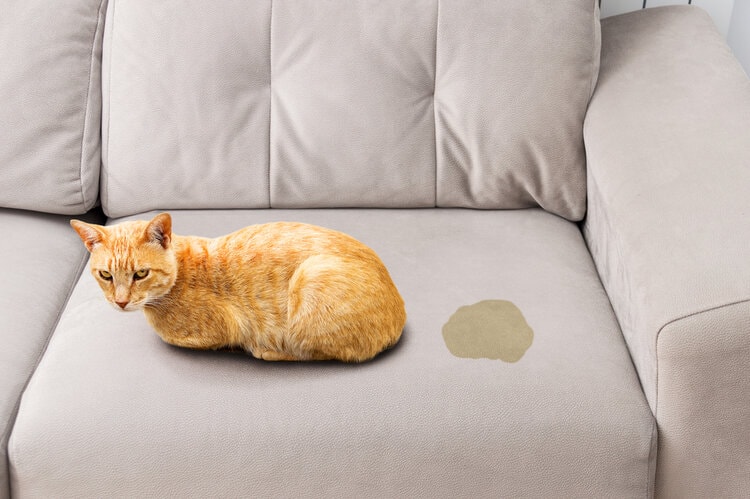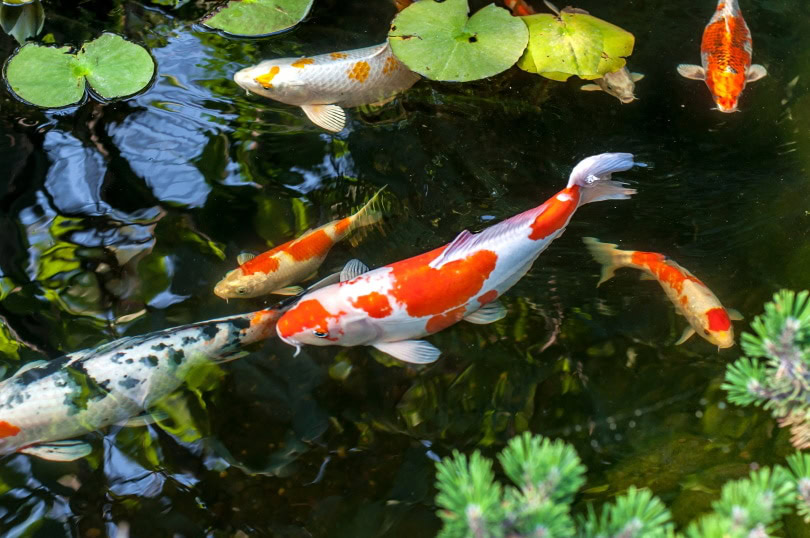VET APPROVED

The information is current and up-to-date in accordance with the latest veterinarian research.
Learn more »Click to Skip Ahead
Conures are comical and fun-loving birds. They are popular pet birds due to their eye-catching colors and exciting personalities.
Owing to these quirky personalities, a lot of conure owners will notice that their pet birds bob their heads. This body language movement is entertaining and perfectly normal for this bird species. But what causes this behavior?
Here are some reasons why conures might bob their heads.

The 3 Reasons Why Your Conure Bobs Its Head
Conures come with various characteristics that make them charming. They enjoy having their head scratched or burying themselves in their owner’s shirts, jackets, and sweaters. On top of these characteristics, they are also known for bobbing their heads.
Let’s find out why.
1. They Are Bonding with You
Conures, like many other parrots, tend to bob their heads when they’re content and bonding with you. This has been well documented in Nanday conures and is observed in other conure species too.1 Unlike human children though, this behavior isn’t associated with excitability in parrots.2 Nonetheless, it is considered a positive behavior and isn’t anything to worry about.
At times, during a bonding session, a parrot may attempt to regurgitate undigested food from their crop in an effort to woo you by offering a morsel. This is known as allofeeding and is also considered normal behavior. However, it shouldn’t be confused with vomiting (which consists of partially or completely digested food) and is a forceful ejection of food.
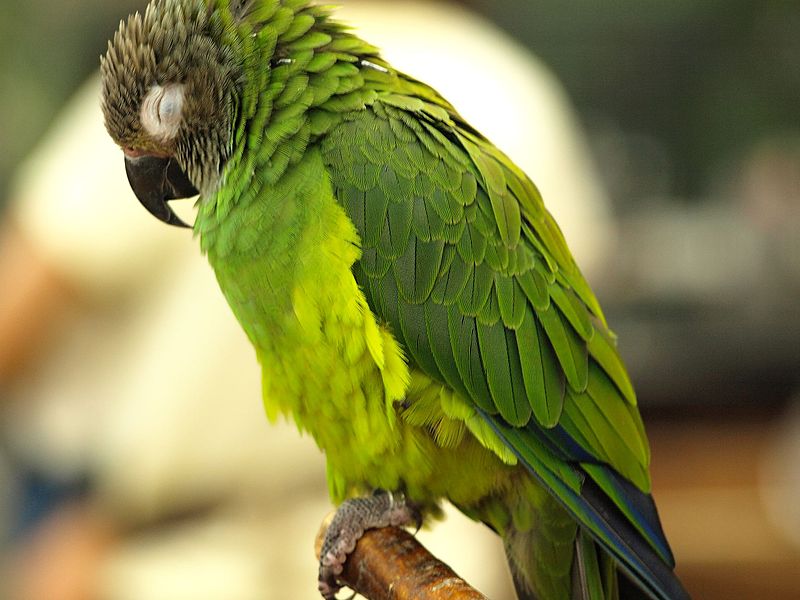
- See Also: How to Read Conure Body Language
2. They Are Showing Affection
If your conure parrot has “fallen in love” trying to woo another bird, they may bob their heads around them. Avian courtship is a complex behavior and often involves several “rituals”, which involve head bobbing at times. However, already bonded conures would not likely show these signs, as they would not need to waste energy or resources wooing each other and could just get down to “business” every time the breeding season rolls around. Talk about efficiency!
3. They Are Copying You
If you are bobbing your head frequently near your conure, they may follow your cue and begin bobbing their heads too! Most parrots have strong social requirements, but conures specifically have been documented to mimic the physical actions of their owners.3
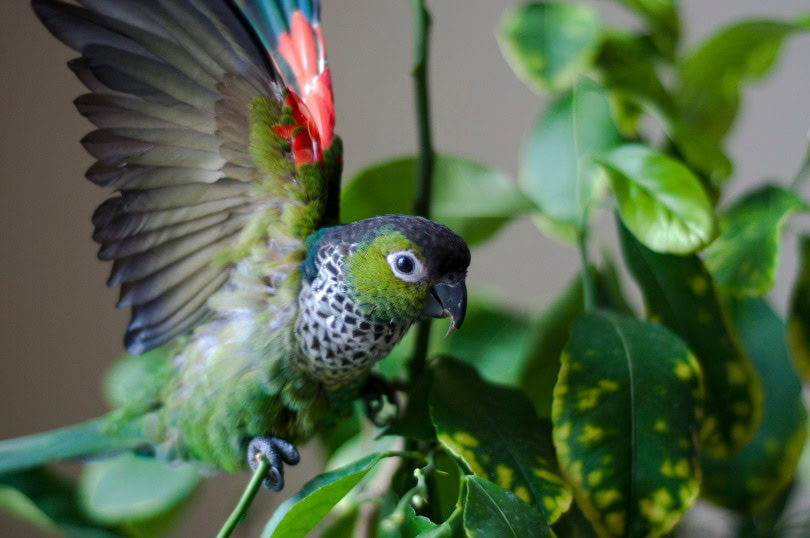

How Can You Reduce or Stop Your Conure From Bobbing Its Head?
We’ve identified why your conure might be bobbing their head. While this behavior can be entertaining and is typically normal, there are ways to reduce the occurrence.
1. Ensure Your Bird Is Well Fed
Feeding your conures, especially the young ones, will stop this behavior. These birds use this method as a way to beg for food. Therefore, it’s best to ensure that your bird has food at all times.
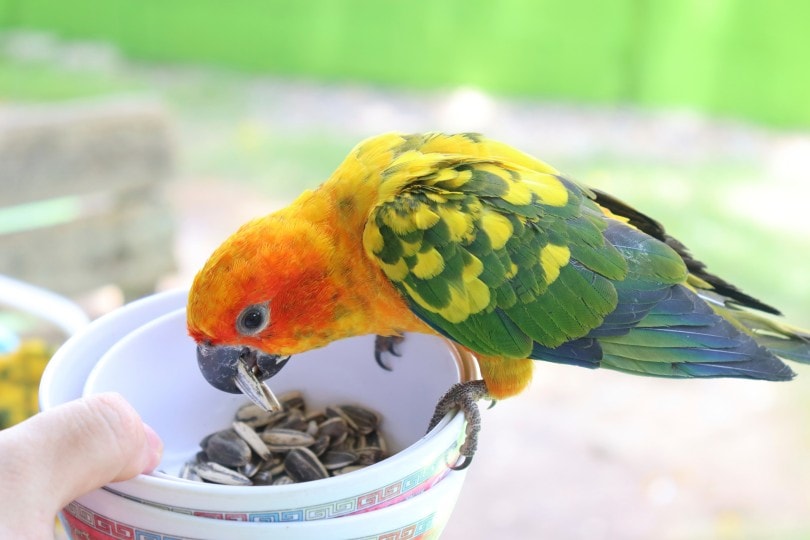
2. Provide Companionship
These birds enjoy the company of their owner and families. As active birds, they want to play and be petted by their caretaker.
Once they realize they are not getting the attention they want, these birds resort to head bobbing and other behaviors such as screaming. Therefore, if you can, try and spend some time with your pet bird to make them feel safe and happy.
3. Keep Them Occupied
You can provide toys for your conures to keep them busy. In addition, have the cage installed with several perches and ladders for the bird to jump and play without any limitations. As long as they get their exercise needs, they’ll tend to be less agitated and be in better moods.
When they are busy, they’ll be less angry and anxious; as a result, it leads to less head bobbing. If you have children, they can engage with them and play as a source of entertainment. When a bird is not physically and mentally stimulated, they get bored quickly and act aggressively.
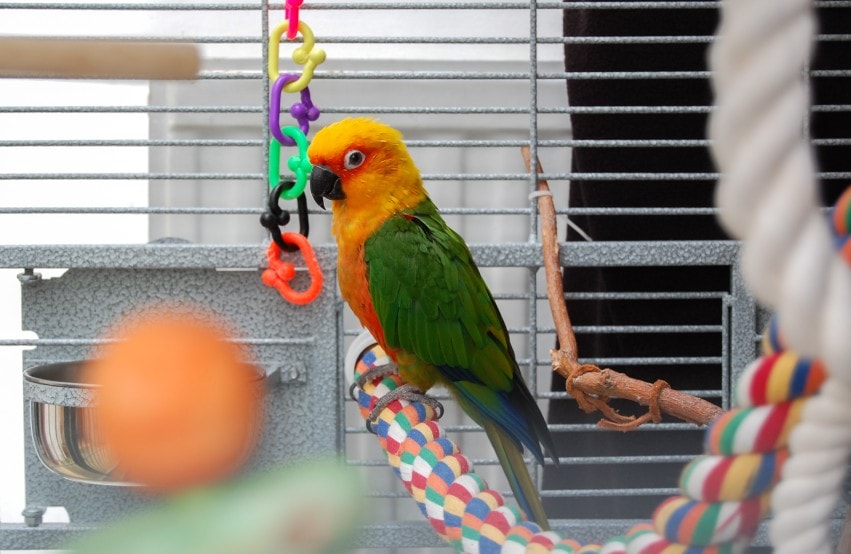

How Vocal Are Conures?
Conures use head bobbing as a means of communication. However, this doesn’t mean that they are not vocal.
Like other species in the parrot family, these birds also have their signature high-pitched screech. They emit this sound when they want attention or when they get excited or scared.
When the bird screeches, most owners tend to give attention to the bird immediately. This quick response can reinforce unnecessary attention-seeking and screeching if the owner keeps rushing to check on the bird.
What Other Body Movements Should You Look Out For?
Apart from head bobbing, there are other normal body movements that conures make. All these movements communicate how the bird is feeling at the moment. Some conures will combine the rapid head movement with some of these actions.
Here are some of them.
Beak Grinding
Like parrots, these birds grind their beaks before drifting off to sleep. This behavior is a sign that they are comfortable.
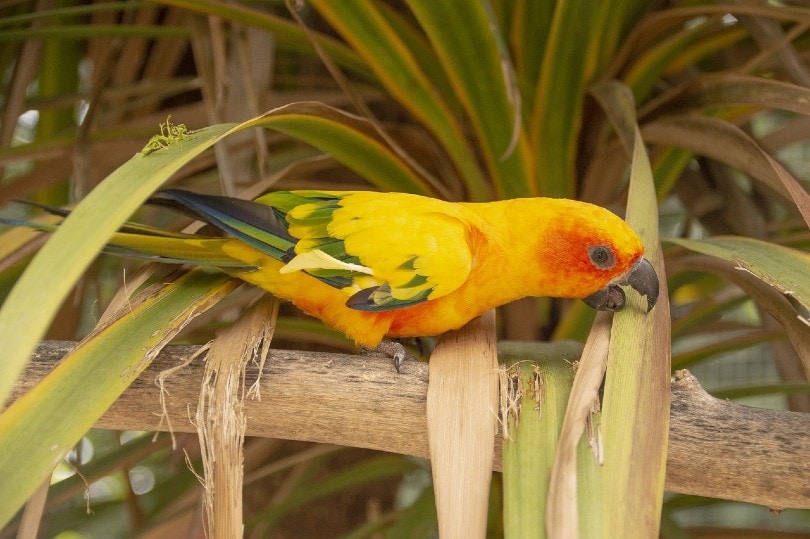
Napping
These birds take what is referred to as catnaps throughout the day. Your conure might nap on a perch while standing on one leg, which is completely normal. If they fluff their feathers, they might be ill or feeling cold.
Aggression
Aggression is normal behavior among many bird species. Your conure might be aggressive because they are hormonal, which makes them territorial.
They might also be acting out of jealousy, especially if you are paying attention to another pet bird. In addition, this behavior can be fueled by anger if they don’t like how they are being handled.
The aggression goes down as soon as you deal with the triggers.
Begging
Drawing this behavior from childhood, conure birds and most birds maintain the begging behavior. They resort to this behavior because they know it has worked before.
When begging, the bird stays in a crouched position, bobs the head while the wings are up, and starts making chick noises. If you don’t indulge them, they’ll eventually stop this behavior.


Origin and Background
The conure species is native to South America. The most popular species include the Sun Conure, Blue-crowned, Jenday, Green-cheeked Conure, and Nanday Conures. Unlike parrots, conures get along with multiple family members when socialized well.
Aratinga and Patagonians are the best choices for families with children because they are affectionate and gentle.
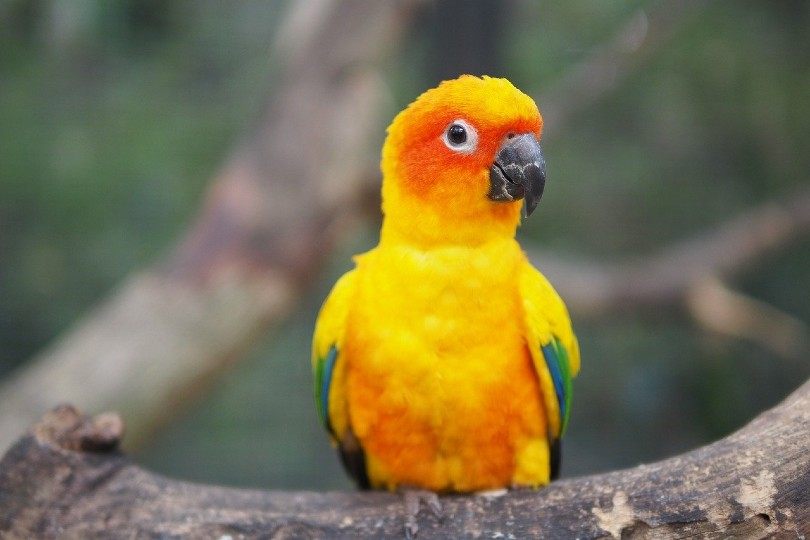
Physical Appearance
Conures are known for their slender build and long, pointed tail. Because of their small size and attractive personalities, they make great family pets. Standing out as colorful pet birds, their feathers come in an assortment of colors from blue, red, green, orange, to yellow.
As a result of their coloring, these birds are often compared with the macaw. They have a distinctive feature that sets them apart; conures lack feathers around the eyes, known as an eye ring.
Temperament
Conures can be very playful and very loud. Compared to other birds, this breed is more inclined to be curious and bold.
To keep them happy, you have to provide these active birds with plenty of toys that keep them occupied throughout the day. Their outgoing personality is perfect for families who have children.
However, due to their tiny size, you’ll need to train your children to handle these birds properly without forcing any interactions. Most conures are natural entertainers. They will dance back and forth, mimic people’s movements, or climb in your shirt.
They are also highly intelligent, meaning you can teach them how to perform tricks using positive reinforcement. You can train them how to shake hands, wave, and so much more. Although their vocabularies are not as extensive as other parrot species, conures can speak a few words.
Conures love being at the center of the action; therefore, they will hang around the family as much as possible. These birds are patient with children, a critical factor that makes them good family pets.
Unlike bigger birds that only like being touched on the head and neck, conures are comfortable being petted everywhere. They only need proper socialization to get along with other birds and your entire family.
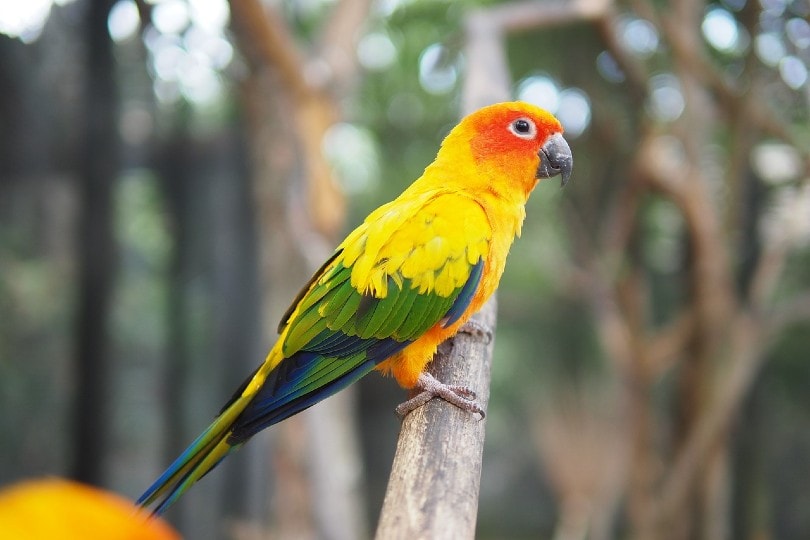
- You may also want to read more about: Red Factor Sun Conure

Final Thoughts
Conure birds are some of the most beautiful birds you could keep as a pet. They are friendly, active, and enjoy interacting with the owner. However, they have some distinct behavior that involves head bobbing.
This movement is common among these birds, and they use it to communicate how they are feeling or seeking attention.
Head bobbing is normal, but you can find ways to reduce it. By paying attention to your pet, you can easily manage its behaviors and reduce aggression.
Featured Image Credit: Kingma, Shutterstock
